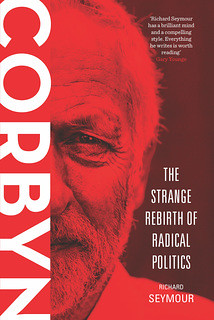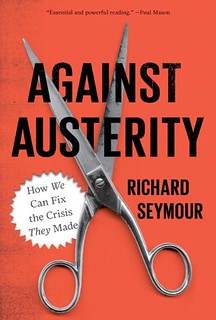I don't know who coined this (update,
now I do), or how it went viral, but it is a radical slogan. I don't just say this because such a slogan implies that feminism must be part of a
total praxis of liberation; that for it to be effective it must challenge class, race and other axes of oppression and exploitation. This much is obvious and is indeed the whole point of the concept. As bell hooks pointed out in
Where We Stand: Class Matters, the struggle for what we now call an intersectional approach was bound up with a struggle for a more radical feminism that sought to attack class injustice:
"From the onset, there has been a struggle within feminist movement between the reformist model of liberation, which basically demands equal rights for women within the existing class struggle, and more radical and/or revolutionary models, which call for fundamental change in the existing structure so that models of mutuality and equality can replace old paradigms."
No, I say this because, like some of the most radical theory, the concept of 'intersectionality' poses a profound epistemological challenge, a challenge to ways of knowing. If the feminist challenge to traditional forms of knowledge seeks to expose and counter its androcentric biases, intersectional feminism finds a plethora of other biases (class, ethnocentric, heterosexist, etc) converging on and intersecting with them. It's not just a question of how a perceived
'privilege' or set of privileges might bind one to the system, to its hierarchies and violence, but more profoundly of how one's location in the social structure enables one to see, or prevents one from seeing.
This has profound ramifications for emancipatory theory. The black feminist
Patricia Hill Collins, writing on the importance of black feminist thought for social theory,
offered the example of African American women who worked as domestic
servants for white families. Their particular location, within a grid
of class, race, gender and other determinations, gave them an
inside-outside status. They not only cooked, cleaned, raised white
children and listened to their white bosses, they also got to see "white
power demystified". They had the advantage, which not every African
American did, of "knowing that it was not the intellect, talent, or
humanity of their employers that supported their superior status". This
particular standpoint, of the insider-outsider, conferred other
advantages. The insider status allowed one to see, and be confided in,
while the outsider status allowed one to see patterns that were obscure
to those immersed in them.
This was structurally similar, Collins argued, to the position of black women in social theory. Being insider-outsiders, they could perceive the routines and patterns, the assumptions, of an existing body of social theory that had been largely dominated by white men. Importantly, this meant that their challenge would be aimed not just at inclusion in the sense of expanding the existing paradigms to 'include black women in', but at fundamentally subverting the existing paradigms by virtue of the particular forms of knowledge they were able to contribute. But if that's true, it also has implications for intersectionality. Insofar as postcolonial feminisms have sought to challenge a blindspot in existing feminisms, they have sought to qualitatively transform them.
The implication of this for intersectionality is crucial: as Johanna Brenner
points out, different types of oppression don't simply stack up on top of one another in an additive way. Taking the example of Anita Hill, whose sexual harassment featured in the Clarence Thomas hearings, she faults 'white feminists' for "claiming Anita Hill’s experience as representative of all professional women’s experience of sexual harassment" and thus eliminating "her specificity as a Black professional woman":
"Positioned by her race, Anita Hill had to deal with her harassment under constraints that white professional women do not face. She had to be a credit to her race. If her success came at a personal cost of enduring harassment, she had to weigh that cost against a more collective one: disappointing all those who counted on her success and who had supported her along the way. White feminists interpreted her long silence about the harassment as the consequence of the isolation and self-blame that many middle-class white women experience in similar situations. In so doing, they not only ignored the history of Black women’s understanding and awareness of their sexual vulnerability in the public world; they also minimized the particular dangers confronting Black women who publicly resist sexual exploitation. Black women’s representations in the dominant culture as sexually voracious and promiscuous threatened not only to discredit Anita Hill individually but to vitiate one very crucial purpose of her professional striving--to recuperate Black women’s image by refuting what everyone believes about the Black woman. Finally, her silence came out of a long history of racial solidarity. Thus, Anita Hill’s silence as well as her speaking out, the uses to which her speech was put by white feminists and the ways in which her speech was discounted by (mostly but not entirely) male spokespeople for the Black community, were emblematic of the difficulties as well as potentials of Black women’s location at the intersection of race and gender."
This underlines another virtue of the concept of intersectionality: its utility for grasping and
thinking through concrete circumstances and experiences, and the role that different axes of oppression play in their wider cultural significance. One could cite other examples. In a series of interviews, bell hooks discusses
the O J Simpson trial. She notes that the specific intersection of race, class and gender in this case allowed the dominant culture to use black women in a particular way: that is, by using race to organise the representation of the whole affair, the culture industry's producers denied the centrality of
domestic violence, and effectively sought to recruit black women to a position of blindness to or even tacit celebration of the culture of patriarchal violence. This, as part of a wider set of racist cultural representations according to which such violence is a 'black' thing, which black people understand and appreciate. Kimberle Crenshaw made a similar point about the way in which race in the Central Park jogger case was used to create a moral panic on the one hand, and ignore actual cases of rape and murder against black women on the other. To take another media attempt to effectively colour-code patriarchal violence,
The Independent's front-page some years ago highlighted the incidence of 'honour' attacks, blaming Muslim men for a spate of violence against women. In doing so, it actually drastically underestimated the scale of domestic violence in Britain.
The objection one might have, thinking about this concept, is that it could imply that the various axes of oppression that 'intersect' at a particular location are somehow conceived of as discrete, separate; that it does not allow one to grasp their unity in a given social formation. Whether it does or not, however, depends entirely on the wider theoretical articulations that the concept is embedded in. The concept of 'intersectionality' is a way of posing a problem, not an ultimate theoretical solution. And the problem it poses is, I think, a specific instance of the global problem addressed by Gramsci: that of achieving effective political unity among the oppressed.










